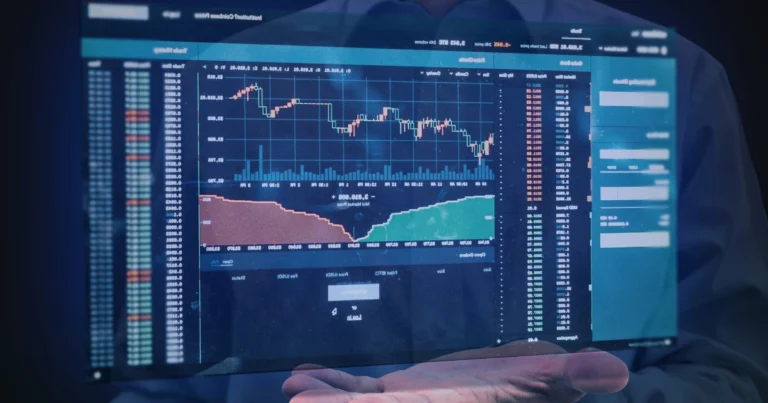Developing trading skills for beginners can be the first step toward financial independence. By learning the basics and understanding market dynamics, you can break free from the constraints of a fixed income and explore new opportunities for growth. Whether your goal is to generate additional income or to work toward complete financial freedom, trading offers a pathway to unlock your potential and achieve your financial aspirations.
You might feel overwhelmed by charts, terminologies, and strategies, but here’s the truth: every expert trader was once a beginner. With the right guidance and commitment, you can fast-track your learning and confidently step into the trading arena. Let’s dive into this beginner’s guide that will simplify the journey and set you on the path to success.
Table of Contents
What exactly are trading skills, and why are they so important?

Trading isn’t just about buying and selling assets; it’s about understanding the market’s rhythm, managing risks, and making informed decisions. Here’s why sharpening your trading skills is essential:
- Risk Reduction: The better you understand the markets, the less likely you are to make impulsive decisions.
- Profit Maximization: Strategic trading helps you capitalize on opportunities effectively.
- Confidence Building: With proper skills, you’ll feel more assured in navigating the complexities of trading.
Trading skills matter because they bridge the gap between chance and calculated success. They’re the foundation for sustainable, long-term growth in the market.
Step 1: Master the Basics of Trading
Understanding the Types of Trading Markets
To fast-track your trading journey, you need a solid grasp of the various markets available:
- Stock Market: Buy and sell shares of publicly traded companies.
- Forex Market: Trade currencies and take advantage of price fluctuations to make a profit.
- Cryptocurrency Market: Trade, invest, and manage digital assets such as Bitcoin and Ethereum.
- Futures and Options: Predict the future price movements of assets with contracts.
| Market Type | Liquidity | Risk Level | Ease for Beginners |
|---|---|---|---|
| Stock Market | High | Moderate | High |
| Forex Market | Very High | High | Moderate |
| Cryptocurrency | Moderate | Very High | Moderate |
| Futures/Options | High | High | Low |
Understanding where your interest lies will help you focus your learning efforts.
Learn Essential Trading Terminologies
Here are a few essential terms you should get to know:
- Bid-Ask Spread: The difference between the price buyers are willing to pay and sellers are asking.
- Leverage: Borrowed capital to increase your market exposure.
- Stop-Loss: An order to sell an asset when it reaches a specific price to limit losses.
- Candlestick Charts: Graphs showing price movements over time.
Step 2: Set Up Your Trading Framework
Choosing the Right Platform
Not all trading platforms are created equal. Look for these features:
- User Interface: Ensure it’s intuitive and beginner-friendly.
- Fees: Opt for platforms with transparent pricing.
- Security: Robust measures to protect your data and funds.
- Customer Support: Reliable assistance when needed.
Popular beginner-friendly platforms include eToro, Robinhood, and Binance.
Building Your Trading Toolkit
Equip yourself with the necessary tools:
- Charting Tools: platforms like TradingView to simplify and enhance your technical analysis.
- News Apps: Stay updated with Bloomberg or Reuters.
- Community Forums: Learn from others on platforms like Reddit’s r/WallStreetBets.
Step 3: Develop Your Trading Strategy
Different Types of Trading Strategies
Every trader needs a strategy. Here are some to consider:
- Day Trading: Make several trades in a single day to take advantage of small price changes.
- Swing Trading: Hold positions for several days to weeks, targeting medium-term price trends.
- Scalping: Make quick profits from minor price changes, often within minutes.
- Long-Term Investing: Hold assets for years, focusing on fundamental value.
| Strategy | Time Commitment | Risk | Potential Returns |
|---|---|---|---|
| Day Trading | High | High | High |
| Swing Trading | Moderate | Moderate | Moderate |
| Scalping | Very High | Very High | High |
| Long-Term | Low | Low | Moderate |
Risk Management in Trading
Even the most effective strategies can fall apart without proper risk management. Keep these principles in mind:
- Set Stop-Loss and Take-Profit Levels: Predetermine the amount you’re willing to lose or gain.
- Diversify Your Portfolio: Diversify your portfolio by spreading your investments across various assets to reduce risk and maximize potential returns.
- Calculate Risk-to-Reward Ratios: Aim for trades with at least a 1:3 ratio.
Step 4: Practice Before You Trade
Use a Demo Account
Practice makes perfect. Many platforms provide demo accounts that allow you to:
- Test your strategies without risking real money.
- Familiarize yourself with the platform’s features.
- Learn from mistakes in a risk-free environment.
Learn from Mistakes
Mistakes are inevitable, but they’re valuable learning tools. Maintain a trading journal to:
- Track your trades and decisions.
- Identify patterns in your successes and failures.
- Continuously refine your strategy.
Step 5: Stay Informed and Keep Learning
Follow Market Trends and News
Stay ahead by:
- Subscribing to trusted financial news sources.
- Using apps that aggregate market updates.
- Monitoring global events that impact markets, like interest rate changes or geopolitical shifts.
Invest in Continuous Education
Expand your knowledge with:
- Books: If you’re new to trading, consider reading A Beginner’s Guide to Day Trading Online by Toni Turner—it’s a great starting point.
- Courses: Online classes on platforms like Coursera and Udemy.
- Mentorships: Learn directly from experienced traders.
Engaging with communities and forums can also expose you to diverse perspectives and strategies.
FAQ: Common Questions About Trading Skills for Beginners
1. What is the easiest trading strategy for beginners?
- Swing trading is often recommended due to its moderate time commitment and risk level.
2. What amount of capital is necessary to begin trading?
- You can start with as little as $100, but having $500-$1000 provides more flexibility for diversification.
3. Can I trade without prior experience?
- Yes! Use demo accounts, learn through courses, and start with small investments to gain hands-on experience.
4. What are the best tools for beginners?
- TradingView for charts, Bloomberg for news, and forums like Reddit for community insights.
Conclusion: Your Fast-Track to Trading Success
Trading doesn’t have to be intimidating. By mastering the basics, setting up a solid framework, practicing diligently, and continuously learning, you can accelerate your trading journey. Always keep in mind, every expert started as a beginner.







